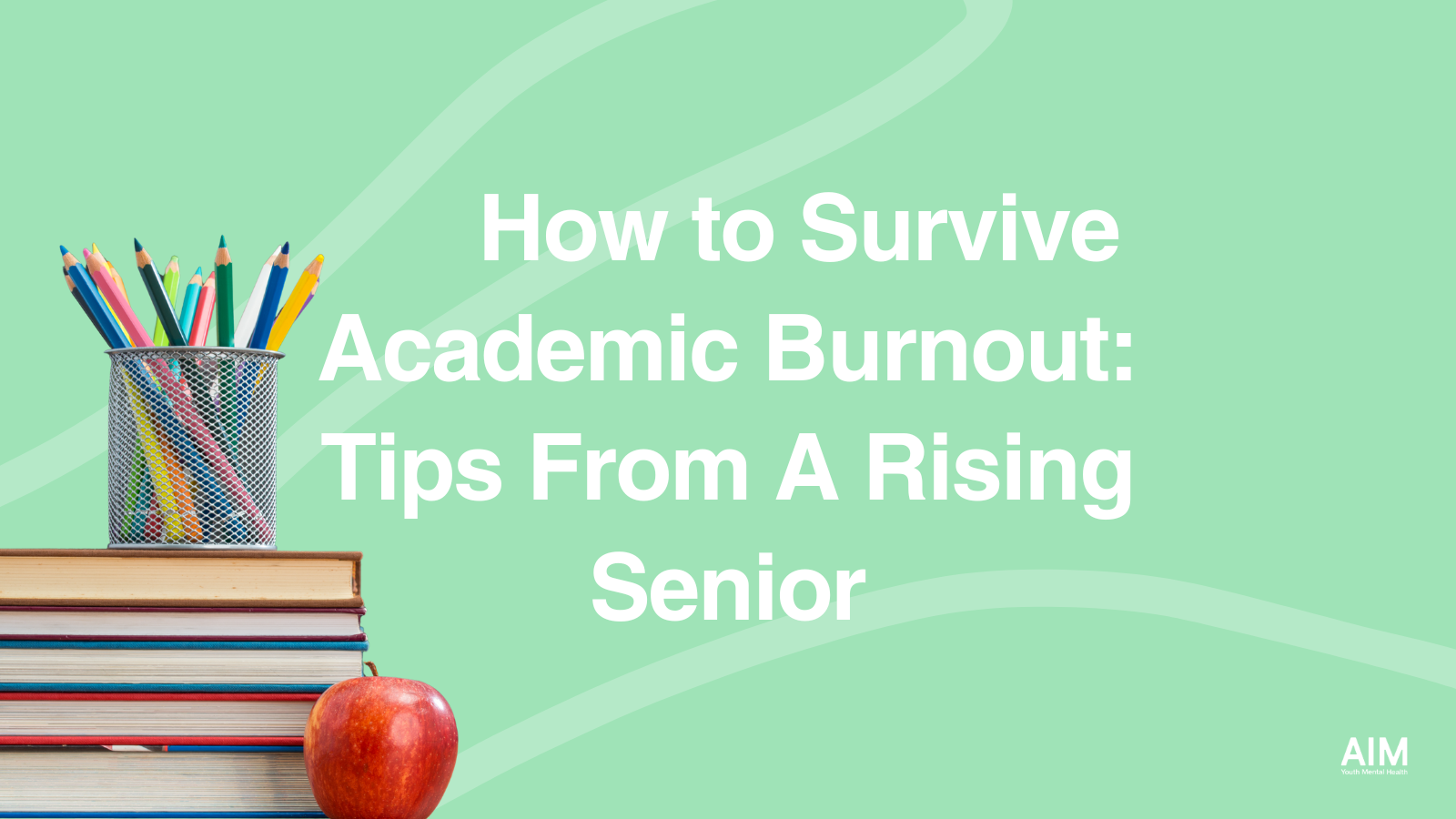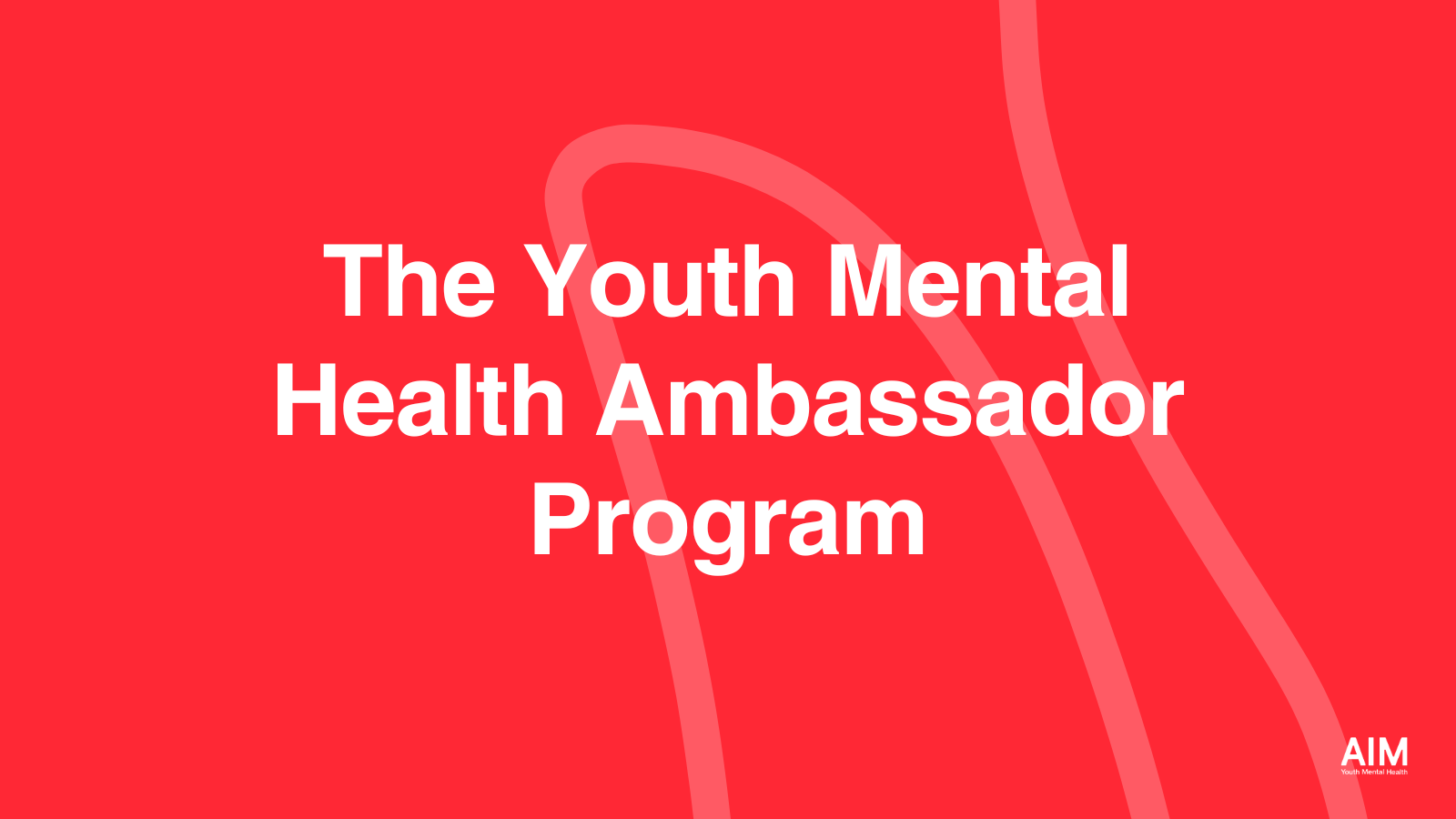An instructive video series, funded by AIM Youth Mental Health, helps parents participate in their teens’ recovery from eating disorders.
By Jill Suttie
When your teen has an eating disorder, it can be a scary thing for a parent. After all, eating disorders can wreak havoc on an adolescent’s body, affecting their cardiovascular, endocrine, neurological, and gastrointestinal systems. It is a serious disease that can lead to death, and cases are on the rise, a disturbing trend.
Cynthia and Greg* first learned of their own daughter, Megan’s, eating disorder when she tearfully confessed it to them in the summer of 2021. She’d been restricting her food intake for some time, but Cynthia and Greg hadn’t understood the depth of Megan’s problem until then.
The news was devastating.
“At the beginning, we were both shocked, just stunned,” says Cynthia. “We had noticed Megan having some of the behaviors of an anorexic, but we’d always just assumed that was because she wasn’t ever a big eater.”
“We really didn’t know what to do,” says Greg. “We read somewhere online that you shouldn’t focus on how much your child eats, but rather that she eats at all. But we learned pretty quickly that there’s really a lot more to it than that.”
 Helping a child heal from an eating disorder on your own can be a struggle. Parents don’t necessarily understand what’s happening with their teens—what causes them to restrict their eating or purge themselves of calories with exercise or vomiting. If they try to simply cajole their teens into eating, it’s likely that the problem will only get worse, because the child’s underlying issues haven’t been resolved.
Helping a child heal from an eating disorder on your own can be a struggle. Parents don’t necessarily understand what’s happening with their teens—what causes them to restrict their eating or purge themselves of calories with exercise or vomiting. If they try to simply cajole their teens into eating, it’s likely that the problem will only get worse, because the child’s underlying issues haven’t been resolved.
Though scientists don’t understand exactly what causes eating disorders, progress is being made on that front—thanks, in part, to Dr. Walter Kaye, the founder and director of the Eating Disorders Center at the University of California San Diego, an AIM grant recipient and member of the organization’s Scientific Advisory Board.
Kaye leads a team of researchers and clinicians devoted to understanding the neurological bases of eating disorders and using knowledge of the brain to improve treatment. In this way, Kaye and his team hope to give parents like Cynthia and Greg useful information about their child’s disease and what to do about it.
“By basing our treatment on the working of the brain and how it processes information, we can focus on the real problems these children have and give them specific tools and skills to help them manage,” says Kaye.
The central role of the brain in eating disorders
Past theories about the causes of eating disorders assumed they develop because of overly controlling family environments or societal messages around thinness and beauty. While these factors can play a role, Kaye doesn’t think they matter as much as individual neurobiology.
Kaye and his team have been studying the brains of people with anorexia and coming up with interesting findings. For example, one study found that when people suffer from anorexia, the reward centers in their brains don’t light up when they are eating in the same way they do for other people. This makes it hard for anorexics to respond appropriately to hunger cues, resulting in the telltale eating problems associated with the disease.
“If you or I get hungry, it feels uncomfortable and food becomes rewarding, and it tastes better,” says Kaye. “But that doesn’t happen in people with an eating disorder. It’s kind of the opposite: eating is unpleasant.”
That unpleasant feeling and lack of reward creates anxiety around eating, making mealtimes stressful for anorexics. Yet, eating is crucial for them to gain weight and heal. This conundrum is at the heart of the disease and the reason why Kaye and his team target anxiety when treating patients.
“Since they’re getting very anxious and it’s inhibiting their ability to eat, they need to be taught compensatory skills so they can manage their anxious temperament and initiate eating,” says Kaye.
Kaye’s team also discovered that people with anorexia are more responsive to punishments than rewards—meaning that rewarding them for reaching eating goals during treatment doesn’t work as well as taking away a privilege if they don’t eat. Though Kaye doesn’t advocate that parents mete out harsh punishment, he does suggest parents communicate that there will be consequences if a child refuses to eat.
“We’re basing our treatment on biological principles and the information given by people in treatment, focusing on the kinds of problems they actually have,” he says. “It helps us offer more effective strategies for parents.”
More effective treatment for eating disorders
Currently, the most common treatment for anorexia involves hospitalization to help kids eat and gain weight in a controlled environment, coupled with nutritional counseling and supportive family therapy. However, even this wrap-around treatment can fall short, with many patients dropping out early or reverting to their restricted eating habits after hospital stays end.
Kaye and his team have been busy improving those odds by finding more effective approaches.
In one study, they found that a 5-day, intensive family therapy program was successful in helping teens recover from anorexia, suggesting treatment could be shorter, less expensive, and still effective. In another study, Kaye and his team showed that daytime hospital programs (as opposed to in-patient programs) could lead to positive long-term outcomes for adolescents, perhaps because the challenging transition from the hospital to the home is less jarring. Both studies demonstrate that it’s possible to make therapy more convenient without sacrificing positive outcomes.
More recently, Kaye and his team have used AIM grant funds to create a series of videos parents can view to learn about their child’s disease and help treat them at home. In some, parents get an overview of the science on eating disorders and learn about the role anxiety plays. In others, parents get instructions on how to set up mealtimes at home, as well as what to do if their child struggles to eat.
The videos are now being tested with parents of kids with eating disorders to get their feedback. Cynthia and Greg are among the parents who’ve watched the videos as part of their child’s treatment protocol and found them helpful in understanding more clearly what was actually going on with their daughter.
“One of the things that the videos kept emphasizing was that, basically, the eating disorder is not your child; it’s a disease,” says Cynthia. “You may think an eating disorder is something someone should be able to control—like, why can’t my child just stop it? But you realize that’s not how it works.”
Though Greg had originally thought treating an eating disorder might involve “mind over matter,” he soon learned that it was more complicated than that—more emotion-driven than just a case of willpower. This was made clear to Greg by a video depicting a mother trying to get her anorexic daughter to eat a snack of Cheez-Its. Even though the mother in the video warns her child that she’ll have to go back into treatment if she doesn’t eat her snack, it’s not enough to motivate her.
“That child was more afraid of the Cheez-Its than she was of going to the treatment center,” says Greg. “I would have never thought that’s how she thinks. That really hit home with me.”
Cynthia and Greg found several of the videos instructive and applicable in helping Megan. For example, to help reduce anxiety for Megan, the videos emphasized the importance of making mealtimes frequent, structured, and predictable. They also provided tips for keeping Megan on track around eating, which involved close supervision, scripted feedback, and using distraction wisely, as well as ignoring or redirecting complaints.
While Cynthia and Greg were committed to doing what they could to help Megan, mealtimes were still challenging, both timewise and emotionally.
“You’re basically having to feed your teen six times a day, and it can take quite a while for her to eat those couple of bites,” says Cynthia. “It’s hard when you have to hold your ground and prod your child to continue eating, no matter what, even when you can see she’s suffering.”
 Though it sometimes seemed their insistence on eating was increasing rather than relieving Megan’s anxiety, it was necessary to stick with it and give Megan practice with tolerating and managing her anxiety. But, when friends and family questioned their approach, or when life circumstances made it difficult to stick with the program, Cynthia and Greg started to have some doubts. The videos alone were not enough, so the center provided consultation with a therapist who could answer questions and offer online coaching when Cynthia and Greg needed extra support to keep going.
Though it sometimes seemed their insistence on eating was increasing rather than relieving Megan’s anxiety, it was necessary to stick with it and give Megan practice with tolerating and managing her anxiety. But, when friends and family questioned their approach, or when life circumstances made it difficult to stick with the program, Cynthia and Greg started to have some doubts. The videos alone were not enough, so the center provided consultation with a therapist who could answer questions and offer online coaching when Cynthia and Greg needed extra support to keep going.
Seeing the benefits of a combined treatment approach
So far, Kaye has found many parents are responding favorably to the videos. While the center is still busy producing more of them, they hope to have the videos widely available for parents in the near future.
“We have a lot more modules that we want to build if this all works,” says Kaye.
Luckily, for Cynthia and Greg, they’ve already seen hopeful progress in Megan. Cynthia remembers the first time she noticed a difference.
“The minute Megan got home from school and said she was hungry, I started to cry,” said Cynthia. “It had been a long time since she’d told us that.”
Megan is continuing to improve. She is noticing when she’s hungry, eating with less anxiety, and even gaining weight. Before, Megan had complained of feeling bloated when eating or would gag during meals. She’s not doing that anymore.
Greg is particularly pleased that Megan listens better to her body’s cues.
“Her normal hunger cues were gone for a while, but now they appear to be back. She’s recognizing when she’s hungry and saying, ‘Oh, I want to eat something,’” says Greg. “Sometimes, she’ll eat dinner and say, ‘I’m still hungry’ and go voluntarily to get something. That’s been huge.”
This doesn’t mean Cynthia and Greg’s role is over, though. Megan still occasionally avoids eating by pushing food around on her plate, though now it seems to take less effort to redirect her—as little as a gentle reminder, says Cynthia. For now, Cynthia and Greg continue to monitor Megan’s meals and re-watch the videos to refresh their memory and boost their resilience.
Fortunately, Megan is doing much better. She can now play on her school tennis team, as long as she continues to maintain her weight. And she has gained more personal autonomy around eating—a tremendous relief to her parents and an endorsement of Kaye’s approach.
“Now that her body is used to getting fed regularly, Megan’s not gaining as much weight as she was earlier, but she’s well within the healthy weight range,” says Cynthia. “We’re seeing results, not only in Megan’s eating, but also in our ability to lovingly support her.”
* Pseudonyms are used to protect the privacy of those interviewed for this article.
*The video series are still being researched and refined before being made available for the public.
______________________
About the Author
Jill Suttie, Psy.D., is a free-lance journalist and a staff writer and contributing editor for Greater Good, an award-winning online magazine published by the University of California’s Greater Good Science Center. A psychologist by training, her articles cover scientific research aimed at uncovering the keys to individual wellbeing and a more compassionate society. She also records music and has two CD’s of original songs that can be heard and purchased on her personal website: jillsuttie.com.





